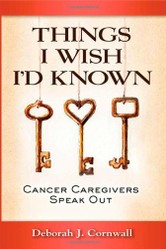One must understand that both parents may experience emotional instability when they have a child. The term “baby blues” is well-known to clinicians that four-fifths of mothers may have it after this major event in their lives. Psychological depression will likely resolve within 10 days. However, some mothers will show symptoms of perinatal depression, and psychiatric signs may suggest that there is a mental disturbance. Its term is perinatal depressive disorder, and many Americans are surprised when they learn that this is common in the United States. In fact, 11.5 percent is the mean in that region of the globe (1, 2, 3, 4, 5, 6).
These mental health disorders include depressed mood and energy, anxiety, sadness, hopelessness, and panic attacks. Some of these mothers may experience resentment of the baby, irritability, or fear of leaving the house. In fact, more than a half million women suffer from this illness yearly. Women of all racial/ethnic groups can be susceptible to it. At the same time, there are predispositions which some women have. These tendencies have to do with substance use disorders, teenage pregnancy, physical or sexual abuse, and multiple births. Multiple birth refers to twins, triplets, or the occurrence of more than one baby during the pregnancy. Whereas they are more common today than singleton pregnancies, they also present significant challenge with child rearing (1, 2, 3, 4, 5, 6, 7).
Additional observations of perinatal depressive disorder include inadequate social support, previous history of depression, anxiety, and bipolar disorder. Moreover, difficult pregnancy can pose a problem for these women. Less common cases may include postpartum psychosis. However, such instances are a medical emergency because the women have psychotic signs and symptoms. This is a complex situation for mother and child. One must also keep in mind that “Suicide is the second-leading cause of death for women in the post-partum period” (1, 2, 5, 6).




 The Reality of Aspirinon 05/24/2021
The Reality of Aspirinon 05/24/2021
 An Old Microbeon 03/31/2021
An Old Microbeon 03/31/2021
 Coronavirus and Mental Illnesson 02/14/2021
Coronavirus and Mental Illnesson 02/14/2021
 Acute Ischemic Strokeon 12/25/2020
Acute Ischemic Strokeon 12/25/2020


Comments